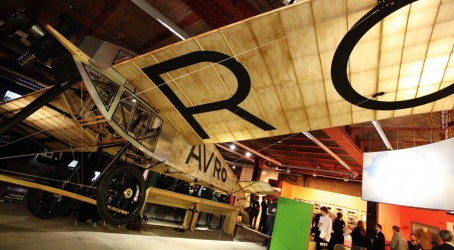Museums
A £9 million refurbishment at the Museum of Science and Industry (MOSI) in Manchester has turned what was already considered by many to be one of the finest establishments of its type in the country into a world-class cultural attraction.
The work on the 130-year-old Great Western Warehouse at MOSI includes the creation of a new ground-floor gallery – Revolution Manchester – which is designed to tell the story of the city’s rich industrial heritage. The gallery is divided into six sections: transport revolutions, computer age, engineering, energy, Cottonopolis, and structure of matter. Each section tells a story running from the past to the future using a plethora of interactive technologies.
One of the main innovations is a huge, eye-catching digital sculpture. By registering a barcode card, visitors can watch their photos travel back in time up the sculpture, past faces and places linked to significant Manchester achievements.
The barcode card also activates a series of games and challenges, creating a log that can be viewed on a personal web page.
All these modern technologies are recognition of the need for a museum such as MOSI to encourage visitor interaction. But they are pointless fripperies unless there are plenty of other “traditional” exhibits to be seen. Fortunately the new gallery doesn’t overlook that side of things, and engineering gets a very decent look-in.
In one corner of the new facility, machine tools get a surprisingly prominent setting. Joseph Whitworth, often referred to as the “father of precision engineering”, had strong links to Manchester, having set up his first workshop in the city in 1833.
There’s one of his sturdy-looking planing machines on show which was used for many years in the locomotive works at Crewe. The machine planed the horn blocks for axle boxes to a previously unseen level of accuracy. Whitworth also introduced the standard screw thread, helping to usher in the era of mass production.
The engineering section also features the work of George Bedson, who perfected continuous rod-rolling. Bedson’s machine drew an iron bar through 16 rollers, causing it to get thinner as it went along. Bedson developed the machine for his employer, the engineers Richard Johnson and Brother, which went on to supply the wire that protected the first transatlantic cable in 1857.
Centre-stage in the new gallery is a selection of transport innovations. These include a beautiful replica of a 1912 Avro F, the first enclosed-cabin monoplane to take to the sky. It set a real precedent – aircraft with enclosed cabins only became standard in the 1920s.

The impressive nature of the new gallery means it would be easy to overlook some of the existing displays. That would be a shame – for MOSI also houses several other display spaces in enormous red-bricked warehouses. The power hall is particularly impressive, offering a gamut of beam engines, pumps, water turbines, oil and gas engines – you name it, it’s there.
Two displays really took the eye – a gigantic Firgrove mill engine made by McNaught of Rochdale in 1907. And a Ferranti cross-compound inverted engine made in 1900. Both are fine pieces of craftsmanship.
Outside the halls, MOSI offers a rare treat. For the princely sum of £2 for adults and £1 for children, a working replica of a Planet steam locomotive that was used on the Liverpool and Manchester Railway takes visitors on a 10-minute trip around the site. The train has a driver, fireman and guard, all dressed in traditional overalls. On the day that PE visited, the steam locomotive was proving a popular source of intrigue and delight for the dozens of children in the queue.
When all this is packaged together, MOSI manages to provide a tremendous day’s entertainment and education. The sheer number of displays, housed in a beautifully modernised industrial setting, combines to offer an unrivalled engineering-related visitor experience. It’s a stunning place that’s well worth a visit.

- MOSI is open from 10am to 5pm every day. Entrance is free.
For more information go to www.mosi.org.uk